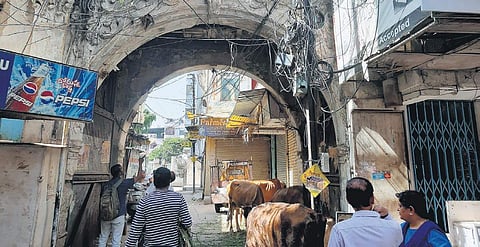

HYDERABAD: Across the world, wherever tourism thrives, there is an apparent formula for its success.
The countries manage to highlight and consummately showcase the heritage and culture unique to them and make a case for international and national tourists to include it in their bucket lists.
We have always fallen short on that count with our policies barely oriented to consider heritage a valuable resource. In fact, it is a pity that heritage is not the USP of our tourism strategies.
Heritage Conservation and Tourism Development are two independent, yet interdependent fields. And this fact is just beginning to garner the attention of policy makers.
Telangana has been making some overtures in this direction. Tourism development and management in the state and the city of Hyderabad have witnessed growth in the last few years in terms of inclusion of number of sites, development of tourist facilities, promotion on different media and other such planned efforts by the government.
Awareness too has been enhanced raising mass tourism to the levels of tourism of experience and meaning.
Adding to the efforts of government are the initiatives of different groups which are conducting theme-based trails and walks regularly feeding the interests of locals and visitors about heritage and natural sites.
It is estimated that tourism is a sector that generates employment in the ratio of five jobs to each visitor. It boosts local economy and cleans up the city, creating efficient infrastructure.
What tourism does not do is directly preserve and conserve heritage, especially in India, where the revenue inflow from tourism is not spent on heritage conservation.
Neither the tourism policy nor the tourism departments are responsible for preservation of heritage, a subject of the Archaeological Survey of India, State Department of Archaeology/Heritage and the GHMC.
In Hyderabad, most areas are living heritage spaces, with communities across generations inhabiting the buildings and precincts, conducting their livelihoods there.
This is the unique aspect which goes to make heritage important not just for tourism; the initiatives taken to develop facilities for visitors serve to enhance the quality of services and infrastructure for citizens too.
On the occasion of World Tourism Day, it may be appropriate to look at one such monument in Hyderabad that stands silently in a bustling area of activity, linked to a much larger heritage and yet is in a state of neglect and disrepair.
The Hashmat Gunj gate in Koti, Hyderabad, is an example of many historic monuments in Hyderabad that are recognised neither by the government nor by the locals, let alone being included in the tourist circuits and projected as city’s pride.
The Hashmat Gunj gate, a stand-alone structure is located on the Badi Chowdi lane, Sultan Bazar, presently acting as an entrance to the Kabootar Khana open space behind Gokul Chat.
In close proximity on the Badi Chowdi lane passes the Hyderabad Metro Rail line, on the south of Hashmat Gunj gate. Modern buildings are built over and attached to the historic gate, concealing its architecture and damaging the structure.
The Gate bears the British government insignia, indicating its link to the former British Residency, presently used as Koti Women’s College, Hyderabad, across the road.
The Sultan Bazar-Badi Chowdi lane has its roots in the colonial times. These areas, known as the Residency Bazars and Hashmat Gunj lane, were developed along with the then British Residency, built during 1803-06 by the Fifth Resident James Achilles Kirkpatrick, who was given the title of Hashmat Jung by the Nizam and thus the gate derives its name.
The former British Residency was declared a state-protected monument by the AP High Court in 2006, and the restoration of the main Durbar building and a few other structures lying on the campus of the Koti Women’s College are being undertaken by the Telangana State Heritage Department.
However, the Hashmat Gunj gate, and a few other structures of the erstwhile Residency complex such as the Clock tower which fall outside the boundaries of the Koti Women’s College, are not connected to the Residency presently in space, use and management.
Standing in mutilated and damaged condition, amidst busy commercial markets, attached to the Kabootar Khana courtyard occupied by residences and shops, the Hashmat Gunj gate provides a unique opportunity for development as public space for locals.
Its connection to the internationally acclaimed monument of Residency makes the structure a historic monument of higher significance.
What is urgently needed is to preserve and protect the Hashmat Gunj gate, remove encroachments from its immediate surroundings and develop green and visitor facilities. Connection to the British Residency needs to established by visually opening up the Residency monument by replacing its existing stone wall with a grill fence.
It is also a design possibility to include restoration of the Hashmat Gunj Gate space as an extended area of the Hyderabad Metro Rail Corridor beautification and landscape scheme, if taken up by HMRL.
The development of Hashmat Gunj Gate and its surroundings as an urban community space is achievable through collective efforts by the GHMC, HMRL and the State Heritage Department.
It can be a quaint hangout for history buffs, heritage lovers, interest groups space for pigeon lovers, the busy market of trinkets, a favourite of locals, who love to grab a quick bhel at Gokul Chat, a peaceful yoga session at the Gandhi Gyan Mandir and definitely on the heritage walk to the British Residency.